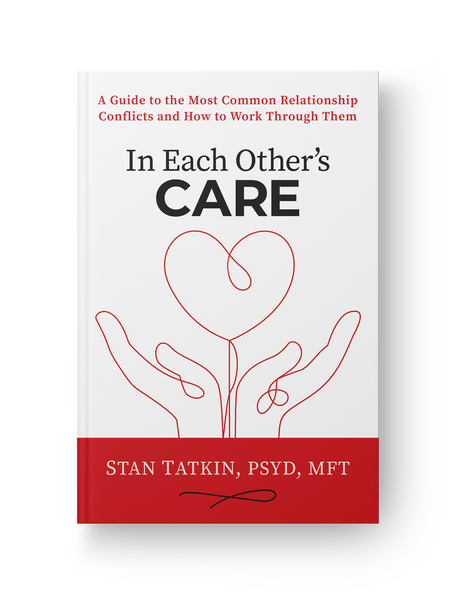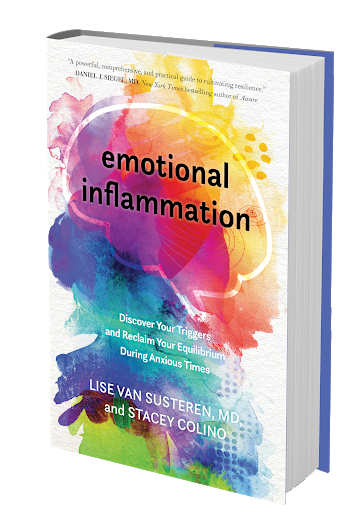Do you really know whether your partner understands what you are saying?
Human communication, even on a good day, is really terrible. It really is. We misunderstand each other much of the time.
Do you really know whether your partner understands what you are saying? Does your partner get the nuances or understand the purpose of the words you are using? Do you think they know exactly how you feel about your words or the meaning of the words? When you’re listening to someone, do you think you really understand them? Do you understand their mind? Their context? More often than not, you are approximating each other. You’re getting close.
Most of our communication is implicit, nonverbal. Our verbal communication, which we all love and adore and depend on, is really the culprit. It gets us into a lot of trouble.
When you were dating, I’m sure you were much more careful about the words you used. How careful are you now? Many couples grow sloppy with each other in terms of their verbal communication. They take shortcuts because they think they know each other.
You’re probably taking a lot of shortcuts, assuming your partner understands the meaning of your words, and you’re getting into trouble. Do you even have each other’s attention when you are communicating? Many times, you don’t. You both are busy, you are moving, and your lives are only getting busier. And then you find yourselves saying, as many couples do, “Oh, it’s my partner’s problem. They’re not listening.” Right?
When it comes to communication, you both must take responsibility for making sure that your speech is clear and understood by the other person. As you will read in this section, just because you say something, doesn’t mean your partner is translating it as you intend.
Here’s an example:
Partner A: I want more intimacy in our relationship.
Partner B: I want that, too!
The problem here is that to Partner A intimacy means “more sex.” Partner B, on the other hand, thinks that agreeing to intimacy will mean more interpersonal talk. What is more is that sex actually means “only intercourse,” and interpersonal talk specifically means “more questions about how I’m doing.” That is how we talk to each other—as if the other person knows exactly what we mean. Much of the time, we don’t even know exactly what we mean.
Remember the good old days (of course you don’t) when speech was simpler? We would just say, “Duck!” or “Eat!” or “Sleep!” or “Run!” or “Lion!” Fast forward to today’s linguistic complexities and consider for a moment all the nuances in our talk, all the lingo, all the changing meanings for regular words. Take the word sick, for example. Today it could mean physically ill, mentally ill, disgusting, or amazing. And the language couples use with each other can seem even more confusing. “I want to know you deeply” could mean many different things. “I want you to show me your soul” could make a person’s head spin. “I want you to say what you really feel” can, for some, seem like a trick or an insurmountable task. We use a great many words and phrases that mean a great many things, none of which partners clarify with each other. This is a terrific error.
The human brain is always trying to conserve energy; it does as little as possible until it must. Most people, particularly partners, will treat clarification as unnecessary and, in fact, frustrating. “You should know what I mean,” a partner might say. “My meaning is obvious.” Or, “Everyone knows what that means.” Both speaker and listener feel persecuted by the chasm between meaning and understanding. Minds misattune, which leads to heightened arousal (faster heartbeat, higher blood pressure), which leads to threat perception, which leads to fight, flight, or freeze.
Rinse and repeat.
Check and Recheck
This common and frankly annoying error is easily avoidable by returning to the formality likely present at the beginning of the relationship. Check in with simple, nonthreatening questions or requests:
- “Are you saying . . . ?”
- “I want your eyes because this is important . . .”
- “Let me make sure I understand . . .”
- “Say back what you heard . . .”
- “Let me repeat that.”
- “What do you think I meant by . . . ?”
- “We may not be talking about the same thing. Are you saying . . . ?”
Checking and rechecking is vital to daily governance and the proper running of a two-person system. If you were two astronauts communicating out in space while tethered to the mothership, would you be incredibly careful with your communication? You bet you would. Your lives would be at stake. If you were two generals deciding a war plan, would you talk in shorthand or assume you were on the same page? If you did, people would die. You are no different. If you and your partner continue to use shoddy communication to share information, your relationship will suffer badly.
These errors, if repeated again and again, go right into your respective personal narratives about what’s wrong with the other partner and why you’re unhappy. Remember, our personal narratives form to protect our interests only and are almost always based on faulty data—like errors in communication!
Be orderly. Be precise. Be responsible. Be a two-person system.
This excerpt is adapted from In Each Other’s Care: A Guide to the Most Common Relationship Conflicts and How to Work Through Them by Stan Taktin, PsyD, MFT.

Stan Tatkin, PsyD, MFT, is a clinician, researcher, teacher, and developer of A Psychobiological Approach to Couple Therapy® (PACT). He has a clinical practice in Calabasas, California, and with his wife, Dr. Tracey Tatkin, cofounded the PACT Institute for the purpose of training other psychotherapists to use this method in their clinical practices. For more information, visit thepactinstitute.com.

Learn More
Amazon | Barnes & Noble | Bookshop | Sounds True
Inspiration: 27 Vital Aspects of Breath

Have you ever paused to consider how amazing your breath is? Here’s a list of some inspirational aspects of breath. (The word inspiration itself means to breathe.) Some might already be familiar to you. You may feel drawn to appreciate some more than others. Devoting close attention to any one will lead to all the others. It’s all there – in a breath.
1 Present-ness
My mind wanders. My thoughts drift off. Sometimes, I could drown in regret, lost reviewing the past. Meanwhile, my breath is always precisely in the present moment.
2 Happiness
When we drop our worries and hurries, we can fully connect with our aliveness. Breathing with this joy on our lips, we learn a deeper, more enduring happiness. It’s our birthright. Conscious breathing can be a great relief, having nothing else to do but be – and a reminder there are enough simple reasons for happiness in this present moment.
3 Leadership
I’m a follower of my breath. Following my breath can tell me volumes about how I’m feeling and what I’m thinking; where I am and where I need to go in my life. When I notice my mind has wandered – I simply draw attention back to my breath.
4 Constant Companion
Since my birth, no one and no thing has been as close to me, without fail, rain or shine, as my breath. No sensation has been as familiar to me. When I follow my breath, I feel myself coming home, where I’ve always belonged.
5 Best Friendship
Ultimately, no one may love me as much as I do. To remain faithful to my part of the relationship, I pay utmost attention to my breath. Sometimes, I need to take time for us to get to know each other better.
6 Relational
I say, “my breath,” but I could b breathing in your out-breath. The simple implication of breath’s merging of within and around can dramatically shift my perspective.
7 Inspirational
We have many muses in our creative life. They may take the form of rituals, people, or substances. My primary inspiration is breath.
8 Nature
Through my breath, I observe my connection to Nature and her processes. The in-and-out of breath mirrors the natural cycles – the tides, the sun and moon, life and death.
9 Slowness
Nature reminds me to slow down, since my observation reveals how slowness tends to predominate our surroundings. Paying attention to breathing, it tends to deepen and slow, of its own, naturally. Living in a culture addicted to an ever-accelerating pace, slowness can feel like salvation.
10 Calm
Paying attention to breath allows it become as deep as it wishes to be. When I feel my belly soften and breath grow deep, my vestigial instincts of flight-fright-or-fight have gone away: less stress! I am aware of how calm I feel.
11 Solidity
Without calm, my strength can dissipate, disperse, and scatter. Without calm, I cannot engage in gentle inquiry into the nature of self and reality. My reserve of calm assures my presence has solidity, even in emergency. I can show up, and be present when I show up.
12 Silent
Paying attention, I notice breath is slower than thought. Nor does it obey the restrictive patterns of verbal language. I pay close attention to each quiet breath, from beginning, middle, and end – and with a blank space, in between. This silence is not blind.
13 Anonymity
My breath is totally unconcerned whether or not I am up with latest fashion, or what I look like. I don’t need to cultivate an identity. Breath accepts as I am. In that complete acceptance, I could be nobody – or anybody. This is anonymity is a passport to the undomesticated world of the wild.
14 Impermanence
Breath is a living example of the impermanence of all things – a reminder of the importance of flow. You can never breathe the same breath twice.
15 Focus of Awareness
Meditating, I could focus on sound, which is also ever-present, but I like breath best.
16 Emotional Self-Regulation
Being intimate with how a breath arises, manifests, then falls away is a transferable skill, applicable to emotions and thoughts. These too arise, take form, and pass. Besides my recognizing they’re impermanent, it’s great to also be able to catch negative thought forms and destructive feelings at their inception – before they’ve pulled us along by the nose – learning to step away from their pull on us, understand them, and heal and transform their energies.
17 Direct
Breath isn’t symbolic nor abstract. There’s no need to look behind breath, searching for hidden meaning. Beyond anyone else’s words or labels, connecting with breath is to see for one’s self, through direct experience.
18 Intentionality
Wanting to change my behavior – my thoughts, my words, and my deeds – conscious breathing is wonderful training. To be conscious of just one breath immediately sets intention into motion. Conscious breath provides a space where I can consider how to respond, rather than react.
19 Universal
Like the wind that encircles the planet, breath is everywhere. It knows no religious denominations, national boundaries, ethnic differences, or social classes. Languages vary but they all tend to point to the vital connection to life of breath.
20 Vital
Mindful of breath, I return my attention to the fountain of life. Dead people don’t breathe. Many languages equate our personal breath with a connection to something greater than ourselves.
21 Centering
Shunryu Suzuki Roshi once likened breath to a hinge between mind and body. In present-moment awareness of breath, my body and mind find each other. In the vital spaciousness of breath, body mind spirit can align as one.
22 Interconnection
Scientists tell me my breath nourishes the green world of vegetation, and vegetation nourishes my breath. I know, first-hand, such interdependent interconnection of all things through my breath. I can feel how body conditions mind … mind conditions body … breath conditions both.
23 Letting Go
Breathing out teaches me a central lesson: letting go. I can’t breathe in without breathing out.
24 Ineffable
Breath is invisible. It has no color, no shape. It’s invisible. Breath – like mind, like life – is ineffable.
25 Selflessness
Breathing out, I let my exhalation simply fall away from my body, as if as far as to the horizon. Then I wait. I am as still as a hunter waiting for a deer. I don’t summon it, nor try to will it into existence. My next breath comes, nevertheless. As if of itself. Without fixed identity, lacking any separateness, empty of ownership. In this, it is perfectly open to anything and everything, as limitless as a big clear sky. Selfless.
26 Prayer
Mindful breathing can be a form of prayer.
27 Engaged
Breath can’t be confined to a monastery. It’s actively engaged in the world.
 Gary Gach hosts Zen Mindfulness Fellowship weekly in San Francisco, since 2009. He’s author of The Complete Idiot’s Guide to Buddhism and editor of What Book!? ~ Buddha Poems from Beat to Hiphop. His most recent book is PAUSE BREATHE SMILE ~ Awakening Mindfulness When Meditation Is Not Enough. This brings mindfulness full-circle, back to its roots as a spiritual as well as secular path for complete awakening. It’s available in both paperback and as an audio book. His work has also appeared in over 150 periodicals and a couple dozen anthologies, including The Christian Science Monitor, Harvard Divinity Bulletin, Huffington Post, In These Times, Language for a New Century, The Nation, The New Yorker, Technicians of the Sacred, and Yoga Journal. More info : GaryGach.com.
Gary Gach hosts Zen Mindfulness Fellowship weekly in San Francisco, since 2009. He’s author of The Complete Idiot’s Guide to Buddhism and editor of What Book!? ~ Buddha Poems from Beat to Hiphop. His most recent book is PAUSE BREATHE SMILE ~ Awakening Mindfulness When Meditation Is Not Enough. This brings mindfulness full-circle, back to its roots as a spiritual as well as secular path for complete awakening. It’s available in both paperback and as an audio book. His work has also appeared in over 150 periodicals and a couple dozen anthologies, including The Christian Science Monitor, Harvard Divinity Bulletin, Huffington Post, In These Times, Language for a New Century, The Nation, The New Yorker, Technicians of the Sacred, and Yoga Journal. More info : GaryGach.com.
Buy your copy of PAUSE, BREATHE, SMILE at your favorite bookseller!
Sounds True | Amazon | Barnes & Noble | Indiebound
Copyright © 2019 by Gary Gach.
How to Keep Your Mind from Wandering in a Yoga or Meditation Practice

PHASE 1
Mind wandering is associated with the DMN (default mode network)—areas of the brain that are active when the mind is in its default state of rest. In this phase, the mind seems cluttered with thoughts and feelings all scrambling to be at the center of attention. The meditator may remain distracted by what seems like an endless barrage for some period of time. The brain remains in this state especially when it is not engaged in a specific task.
PHASE 2
Becoming aware of mind wandering occurs when we mobilize a conscious mind-body practice. This phase involves purposefully placing our attention in order to steer our practice, and this effort reveals itself as activation in the insula. As noted previously, the insula is characteristic of interoceptive awareness and self-awareness. In this way, cognizance of the mind’s habitual wandering is a form of metacognition—thinking about thinking—that sets the stage for neuroplasticity. Just to arrive at this stage of meditation is quite an accomplishment, as most people never cultivate any sustained awareness of how their mind meanders from one topic to the next. Practitioners should recognize the value of this second phase because it can take years to arrive here with any regularity. Without knowing this, beginners often become discouraged.
PHASE 3
Shifting out of wandering is like flexing a muscle or changing gears in a car. This phase involves the executive function of the brain, recruiting regions like the dorsolateral prefrontal cortex (dlPFC) and the posterior parietal cortex. The practitioner arrives at this phase through consciously and consistently bringing their attention out of unfocused wandering. Much like training a muscle, we go through high and low points of practice, and—as in the previous stage—it is easy to feel discouraged. Unfortunately, meditators can judge themselves harshly at this stage, lose interest, or give up entirely if they do not recognize just how important this phase is in training the neural muscles of concentration.
PHASE 4
Focusing means that the practitioner has gained some meditative stability and can remain for some time in a concentrative state. This achievement shows up as sustained activation in the dlPFC. At this phase, progressive layers of our mind reveal themselves—both within a practice session and “off the cushion” over time. When the mind eventually starts to wander again, the cycle begins anew, and the practitioner passes through the phases once more to regain focus. With practice, the amount of effort, time, and repetition it takes to go through the cycles decreases, with less time occupied in the earlier phases and more time spent in a focused state.
Excerpted from Yoga & Psyche: Integrating the Paths of Yoga and Psychology for Healing, Transformation, and Joy by Mariana Caplan.


Mariana Caplan, PhD, MFT, E-RTY 500, is a psychotherapist, yoga teacher, and author of eight books in the fields of psychology, spirituality, and yoga. She has been teaching workshops and trainings online, in yoga studios and universities, and at major retreat centers throughout the world since 1997. She is the founder of Yoga & Psyche International, an organization created to integrate the fields of yoga and psychology globally, and lives in Fairfax, California. Learn more at realspirituality.com and yogaandpsyche.com.
Buy your copy of Yoga & Psyche at your favorite bookseller!
Sounds True | Amazon | Barnes & Noble | Indiebound

How to Breathe With Your Whole Body

Spending time in the woods—or shinrin-yoku (“forest bathing”)—has been proven to significantly strengthen our immune system and increase our overall happiness. The forest air triggers our bloodstream to produce 40 percent more natural killer cells, which help fight harmful viruses, bacteria, and other illnesses. The tradition of forest bathing goes back a long time in Japan’s folk medicine, but it has its longest history in China and Taiwan and has been called senlinyu there for centuries.
Ancient knowledge about healing from nature is also found in traditional Chinese medicine. Numerous exercises from qigong are designed to “absorb the chi of nature” and are carried out mainly in forests or green areas with trees. Even the qigong masters of the past apparently knew that nature not only heals in the form of plant- and mineral-based pharmaceutical substances, but also by a person simply being present in a green space and breathing. In qigong, absorbing the chi of nature is always associated with breathing techniques.
Xiaoqiu Li, a two-time Chinese state champion in wushu (traditional Chinese martial arts), taught me the following exercise for “whole-body breathing.” This specific exercise helps you to take in the healthy forest air quite intensely and to release old air and harmful substances very consciously. You will especially feel the purifying effects of this exercise in your body if you are a smoker or live in a polluted city.
Look for a place in the woods that appeals to you and that has an even surface to stand on, and then follow these steps:
- Stand with your feet shoulder-width apart and as parallel to each other as possible, with your knees slightly bent and arms relaxed at your sides.
- “Open” your chest cavity by lifting your arms up in the air away from your body, in the form of a circle overhead, as if you were a tree revealing its mighty crown to the sky. Take a deep breath in while doing this, starting in your stomach and continuing to fill up your chest with air.
- When your arms meet over your head, guide them down in front of your body, holding them together and parallel to each other. Simultaneously begin to breathe out, making fists with your hands while squatting down.
- At the end of these movements, slowly press your elbows against your body at stomach level. This pressing of the elbows and curving of your body help your lungs to empty themselves entirely.
- Repeat these movements slowly and mindfully and try to make everything as smooth as possible.
Excerpted from The Biophilia Effect: A Scientific and Spiritual Exploration of the Healing Bond Between Humans and Nature by Clemens G. Arvay.
 Born in 1980, Clemens G. Arvay is an Austrian engineer and biologist. He studied landscape ecology (BSc) at Graz University and applied plant sciences (MSc) at the University of Natural Resources and Life Sciences in Vienna. Arvay examines the relationship between humans and nature, focusing on the health-promoting effects of contact with plants, animals, and landscapes. He also addresses a second range of topics that includes ecologically produced food along with the economics of large food conglomerates. Clemens G. Arvay has written numerous books, including his bestseller The Biophilia Effect. For more, please visit clemensarvay.com.
Born in 1980, Clemens G. Arvay is an Austrian engineer and biologist. He studied landscape ecology (BSc) at Graz University and applied plant sciences (MSc) at the University of Natural Resources and Life Sciences in Vienna. Arvay examines the relationship between humans and nature, focusing on the health-promoting effects of contact with plants, animals, and landscapes. He also addresses a second range of topics that includes ecologically produced food along with the economics of large food conglomerates. Clemens G. Arvay has written numerous books, including his bestseller The Biophilia Effect. For more, please visit clemensarvay.com.
Buy your copy of The Biophilia Effect at your favorite bookseller!
Sounds True | Amazon | Barnes & Noble | Indiebound

A Doctor’s Simple Tips on How to Get Better Sleep
Thanks to groundbreaking research, we have recently learned that every cell has its own timekeeper that can be thought of as a local clock. Deep within the brain, in the hypothalamus, lies a master clock that regulates all the local clocks, making sure that each one is set to the same time. This complex, coordinated process is in sync with the alternating cycles of day and night and with all the degrees of changing light that occur in a 24-hour period as Earth rotates on its axis. Called the “circadian rhythm”—from the Latin words circa, which means “going around,” and diem, meaning “day”—this internal process regulates the human body’s sleep-wake cycle, among many other functions.
The master clock (think of it as circadian rhythm central) sends hormonal and nerve signals throughout the body, synchronizing the cells’ clocks to the day-night, light-dark cycle of life. On a continuous basis, the master clock can determine what time it is based on messages from photoreceptor cells in the retina that register light conditions outside and report these to the brain via specialized pathways.

Meanwhile, the cellular clocks keep local time, making sure that various activities locally are timed right and are appropriately coordinated with other cells and organs. This is why, for example, key enzymes are produced at certain times, blood pressure and body temperature are controlled, hormones are secreted, the gut microbiome is populated with the right balance of bacteria, and gut motility is appropriate for the hour.
Living in harmony with the way we have evolved brings physiological and emotional balance, creating a good fit between our bodies and minds, between what we’re doing and how we’re designed to function. Honoring our body’s natural rhythms helps stabilize our mood, become more resistant to stress, feel less physical pain, and generally feel and function better physically and mentally. It’s an essential step in cooling and calming emotional inflammation.
The following are some ways you can adjust your habits so that they support your body’s inherent rhythms:
- Put yourself on a sleep schedule. Establish a regular sleep-wake schedule so that you go to bed at approximately the same time each night and wake up at the same time each morning. It’s fine to vary your bedtime by an hour or two occasionally, but don’t sleep in more than an extra hour on the weekends (unless you’re sick); otherwise, you will end up disrupting your sleep pattern for the next night.
- Identify your slumber sweet spot. Most adults need seven to nine hours of sleep per night to feel and function at their best. Once you figure out how much you need, determine what time you need to get up in the morning and work backward to set an appropriate bedtime; or, you can identify what time of night you typically feel sleepy and then set a wake-up time accordingly.
- Brighten your mornings. When you get up in the morning, expose yourself to bright, natural light to stimulate alertness, enhance your mood, and help calibrate your circadian rhythms. Take a brisk walk outside or have breakfast in a sunny spot. If you struggle to reset your internal clock to the “awake” setting in the morning, consider buying a commercial light box that emits 10,000 lux, which mimics a bright, sunny day. Sitting in front of such a light box for 30 minutes in the morning, perhaps while you have breakfast or read the newspaper or newsfeeds, has been found to stimulate alertness and improve mood. Alternatively, you could opt for a desk-lamp-style light box for your desk at work.
- Adjust your indoor lighting. Fascinating research has found that office workers who are exposed to greater amounts of light in the morning fall asleep more quickly at night. They also have better sleep quality and better moods, including less depression and stress, than those who are exposed to low light in the morning.
- Darken your evenings. There is another good reason to make sure that your bedroom (or wherever you sleep) is dark: When people are exposed to light during the night, their total daily melatonin production is suppressed dramatically, by as much as 50 percent. In other words, that nighttime light exposure throws the body’s 24-hour hormone production schedule off-kilter. It’s also wise to install a dimmer switch on the overhead light in the bathroom—or use a dim night-light—so that bright vanity lights don’t stimulate your senses and alertness while you’re taking care of bathroom business before hitting the sack or if you get up during the night.
Ultimately, honoring your body’s natural rhythms requires taking back control of your nights and days. It’s about putting time on your side and making conscious choices about the way you want to live so that you can restore your internal equilibrium, physiologically and psychologically.
Yes, changing your behavior requires giving up the patterns you chose, consciously or not, in the past, and making the switch does take some effort and resolve. But if you make it a priority to stop upsetting your body’s internal rhythms and start living in sync with your body’s inherent needs, the payoffs will be well worth the effort. Your mood is likely to end up on a more even keel, and your energy will increase. Your physical health will probably improve and your emotional equilibrium will, too. Think of it this way: By respecting your body’s rhythms and doing whatever you can to maintain their regularity, you’ll be resetting your internal emotional thermostat, which will improve the way you react to and deal with the stresses and strains that are unavoidable in our modern world.
This is an excerpt from Emotional Inflammation: Discover Your Triggers and Reclaim Your Equilibrium During Anxious Times by Lise Van Susteren, MD, and Stacey Colino.
A Music Playlist for Better Sleep
To help you achieve the best night of rest, we recommend falling asleep to this relaxing music playlist, Music for Better Sleep, available through Sounds True on Spotify.

Lise Van Susteren, MD, previously served as a clinical professor of psychiatry at Georgetown University. She is a go-to commentator about anxiety and trauma for television (including CNN, Good Morning America, NBC, VOA, and Fox News), radio (NPR, Minnesota Public Radio, and others), print media (including the Washington Post, the Wall Street Journal, Newsweek, the Huffington Post, and CQ Magazine), and online outlets (such as Live Science, U.S. News & World Report, Global Health NOW, and many others).
As a thought leader and activist, Dr. Van Susteren addresses issues related to trauma and emotional inflammation through her roles at the Earth Day Network and Physicians for Social Responsibility. She is considered an expert in the psychological effects of climate change.
Stacey Colino is an award-winning writer specializing in health and psychology. In addition to her work as a book collaborator, she is a regular contributor to U.S. News & World Report and AARP.org. Her work has appeared in the Washington Post Health section, Newsweek, Parade, Cosmopolitan, Real Simple, Health, Prevention, Woman’s Day, Harper’s Bazaar, Parents, and Good Housekeeping, among other magazines and newspapers.
Buy your copy of Emotional Inflammation at your favorite bookseller!
Sounds True | Amazon | Barnes & Noble | Bookshop

Winter Solstice: Rebirth of Light


At winter solstice, the darkest point of the year, light begins its journey of reemergence. This great cosmological rhythm sets our internal clocks, our biorhythms, to the subtle glow of slowly increasing light. In our spiritual and creative process, we begin our own gradual awakening and reemergence from the dark, fertile soil of winter.
This biological and spiritual attunement to light is what has made the many cosmological temples with their ritual periods of connection to the sun, so powerful through the ages.
Can you imagine the impact of the winter solstice less than a hundred years ago when we lived life primarily in natural light? At the nadir of the year, we were sustained by the living fire of candlelight and by bonfires when, in some places in the world such as Scandinavia, a day might consist of as much as twenty-three hours of darkness. And we were sustained by celebration—the twelve-day festival of yule and other rituals of its kind—in which we came together and made merry and honored the promise of the lengthening days ahead.
We have marked the all-important sadhya of winter solstice, the rebirth of the sun, with the literal birth of a son. Myths about the return of the sun king at this time of year have been recorded as far back as ancient Sumeria and Egypt. The birth of Christ and of the Lord of the Dance of the seasons re-erect an extraordinary diversity of winter solstice holidays that celebrate the rebirth of the light through the mirror of human birth. In fact, there are more cross-cultural celebrations at this point in the wheel of the year than at any other time—from Scotland to China, from Tibet to Antarctica—as we turn to one another for comfort, solace, and the shared joy that comes from bonding together to celebrate the return of the light.
Looking for more great reads?
Excerpted from Tending the Heart Fire by Shiva Rea.
 Shiva Rea, MA, is a pioneer in the evolution of vinyasa flow yoga. She founded Samudra Global School for Living Yoga based upon her worldwide travels and her studies in UCLA’s World Arts and Cultures program, as well as the roots of yoga in Tantra, Ayurveda, and dance. From transformative home practice videos to large-scale festivals, Shiva offers yoga as a universal pathway for self-realization and awakening positive change for all. For more visit shivarea.com.
Shiva Rea, MA, is a pioneer in the evolution of vinyasa flow yoga. She founded Samudra Global School for Living Yoga based upon her worldwide travels and her studies in UCLA’s World Arts and Cultures program, as well as the roots of yoga in Tantra, Ayurveda, and dance. From transformative home practice videos to large-scale festivals, Shiva offers yoga as a universal pathway for self-realization and awakening positive change for all. For more visit shivarea.com.







